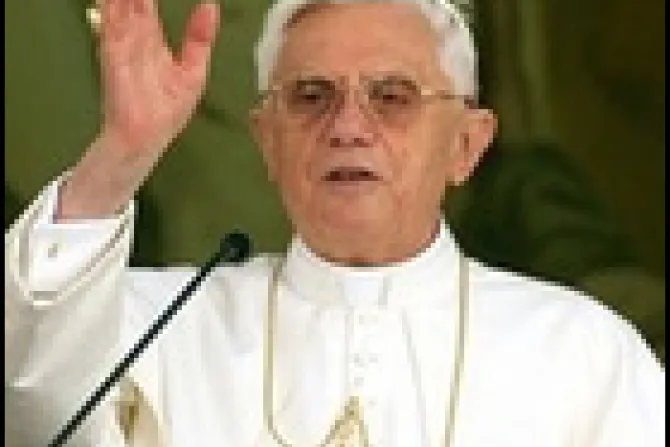Sep 3, 2006 / 22:00 pm
Pilgrims gathering to pray the Angelus with Pope Benedict XVI at the Pontifical residence at Castelgandolfo yesterday, were reminded of the life of St. Gregory the Great. Gregory, one of two Saints to be named “the Great” was pope between 590 and 604 AD. Pope Benedict said the great Saint and Doctor of the Church is, "an example of which both pastors of the Church and public administrators must be made aware."
Benedict pointed out that St. Gregory, who was born into the family of a Roman Senator, was initially on the path to a successful career in politics. St. Gregory was appointed as a prefect of Rome at the age of 34 and was known for "his administrative qualities and moral integrity," according to Pope Benedict.
On the death of his father in 574 he embraced the monastic life and, from then, "the Benedictine Rule became the mainstay of his existence,” Pope Benedict said. “Even when the pope sent him as his representative to the eastern emperor he maintained a poor and simple monastic life."
Gregory was a collaborator of Pope Pelagius II, and succeeded him when he died during an epidemic of the plague. "With prophetic far-sightedness, Gregory understood that a new civilization was being born from the encounter between the Roman heritage and the so-called 'barbarian' peoples, thanks to the cohesive power and moral stature of Christianity. Monasticism showed itself to be an asset not only for the Church but for the whole of society."
To him we owe, among other things, the reform of liturgical music which took his name, "Gregorian chant." However, his most famous achievement, said Pope Benedict, is "the 'Pastoral Rule' which has had the same importance for clergy as the Rule of St. Benedict for the monks of the Middle Ages. The life of a pastor of souls must be a balanced blend of contemplation and action, animated by the love 'that touches the highest peaks when it stoops mercifully over the profound iniquity of others. The capacity to stoop to other people's misery is a measure of the force driving upward to the heights.' This ever-pertinent teaching inspired the Fathers of Vatican Council II in delineating the image of the pastor of our own times."
The Pope concluded his remarks by calling for "the example and teaching of St. Gregory the Great to be followed by pastors of the Church, and by those responsible for the institutions of civil life."


